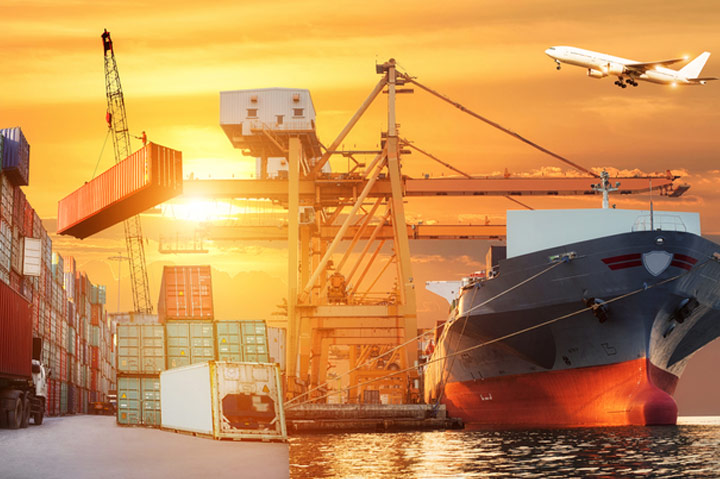News October 07, 2021
Data Shows 12 Million Metric Tons of Goods Offshore at SoCal Ports
The stark stat highlights ongoing port congestion that’s contributing to inventory shortfalls in promo and other industries. Still, some economists are optimistic the worst will soon pass.
An analysis shows that this week there were about 12 million metric tons of imported goods just off the coast of Southern California, sitting idlily in nearly half a million 20-foot-long shipping containers that were stuck on cargo ships that had nowhere to dock at the United States’ most significant commercial port.
The data from the Marine Exchange of Southern California throws into further stark relief the bottlenecks at the ports of Los Angeles and Long Beach, sister ports that handle 40% of all cargo containers entering the United States.

The ongoing port congestion, which set records in late September, is a significant factor in the supply chain snags that are causing product shortages across many industries, including the promotional products market. With it taking longer to get products made, shipped from overseas and delivered to warehouses, inventory shortfalls have been an issue for suppliers throughout 2021.
The backlog in SoCal this week included 63 ships offshore on Tuesday, Oct. 5. The tally featured 19 so-called mega-container ships, which take longer to unload and thus intensify congestion and delays. One of those mega-containers had 16,022 20-foot shipping containers, Insider reported.
This #infographic puts the supply chain crisis in stark relief with succinct, quick-hit stats:
— Chris Ruvo (@ChrisR_ASI) September 23, 2021
By the Numbers: The Supply Chain Disaster https://t.co/J7Sai7ZUwF
In a startling example of how bad back-ups can be, one ship delivering goods from Asia had been waiting offshore for a month. Some ships were floating more than 20 miles offshore to keep shipping lanes clear as possible.
Certain supply chain experts in promo and beyond believe the port challenges will remain at least into the first half of 2022. Some say it could be even longer. As a result of that and related supply chain disruption, top promo supplier executives say that inventory challenges will persist through the busy fourth quarter holiday gifting season.
Distributors, are you worried about inventory and prompt customer service during the Q4 crush? @ChrisR_ASI talks to leading #promoproducts suppliers and has the scoop on what to expect.https://t.co/WpvDDFFgLR
— C.J. Mittica (@CJ_ASIMedia) October 4, 2021
Brian Sharkey, director of supply chain-trade at alphaborder (asi/34063), promo’s second-largest supplier, recently told ASI Media that apparel inventory will be “extremely tight through Q4. Expect T-shirt inventory in particular to be very tight into Q1 2022. Accessories will most likely be the one area that will be the last to recover based on production and logistics issues. Expected recovery and safety stock growth will not take place until well into Q1.”
Rampant consumer demand for imported goods has fueled the crush, as domestic sellers across industries scramble to get enough product stateside from overseas factories. That’s strained shippers, ports and domestic rail/trucking providers. Analysts say ports and domestic transport providers simply lack the labor and infrastructure capacity to meet the demand – a challenge rooted in and exacerbated by COVID-related complications.
Got 1 minute? Then you can get the basics on what's causing inventory shortfalls & rising prices in the #promoproducts industry with this vid. More depth? Read: https://t.co/rTZceaX0dP @Melissa_ASI @Tim_Andrews_ASI @ASI_MBell @asicentral pic.twitter.com/N7aT0U7TY5
— Chris Ruvo (@ChrisR_ASI) June 8, 2021
Nonetheless, some economists are hopeful that the worst of the supply chain crisis may soon pass. Neil Dutta, head of economics at Renaissance Macro Research, wrote this week that while things are still a mess they don’t appear to be worsening and could improve soon. His reasons include a decline in COVID cases, consumer spending shifting to an extent away from product-buying and back to services (eating out, travel), and data that indicates vendor delivery delays have not depreciated beyond lows already experienced, among other factors.
“There are of course risks to our sanguine outlook,” Dutta admits. “COVID cases could pick back up, pressuring supply chains again. Consumer demand for household durables may not let up, keeping the heat on already stretched global supply chains. Labor participation might not recover, weighing on production. But, if we are right that COVID is the proximate cause of most of our current supply chain dilemma, it is likely this improves in the months ahead.”
